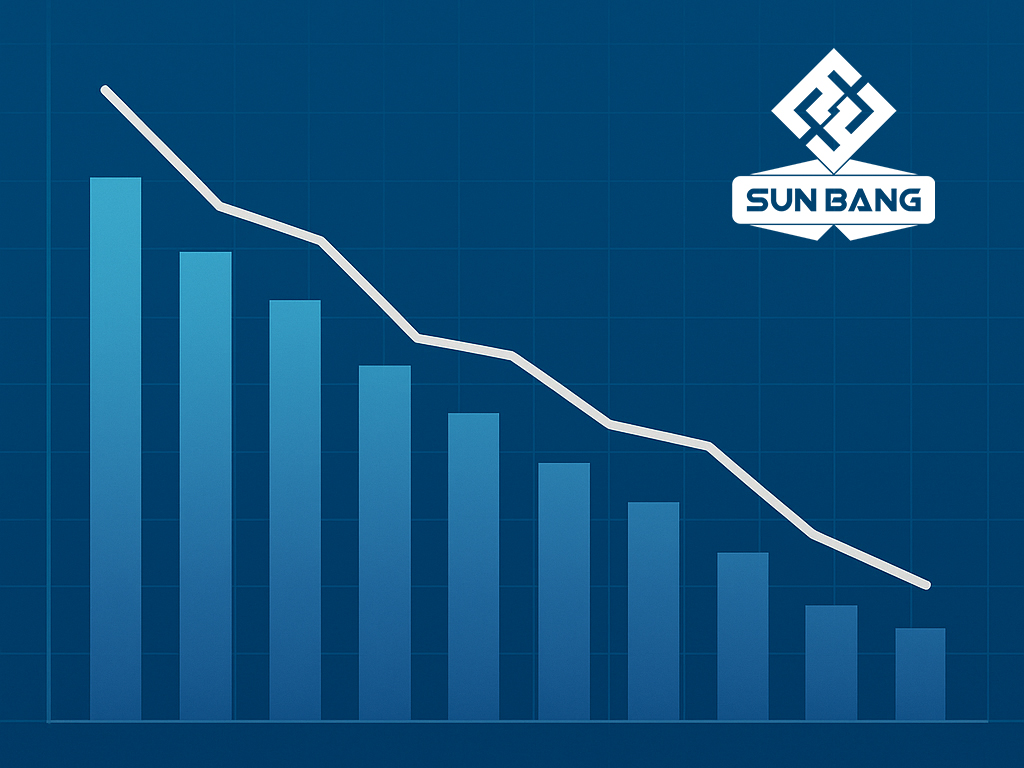Over the past few years, the titanium dioxide (TiO₂) industry has experienced a concentrated wave of capacity expansion. As supply surged, prices fell sharply from record highs, sending the sector into an unprecedented winter. Rising costs, weak demand, and intensifying competition have pushed many enterprises into losses. Yet, in the midst of this downturn, some companies are charting new paths through mergers and acquisitions, technological upgrades, and global expansion. From our perspective, the current market weakness is not a simple fluctuation but rather the combined result of cyclical and structural forces.
The Pain of Supply-Demand Imbalance
Constrained by high costs and sluggish demand, several listed TiO₂ producers have seen profits plunge.
For instance, Jinpu Titanium has suffered losses for three consecutive years (2022–2024), with total losses exceeding RMB 500 million. In the first half of 2025, its net profit remained negative at RMB -186 million.
Industry analysts generally agree that the key factors driving the price bottoming are:
Fierce capacity expansion, increasing supply pressure;
Weak global economic recovery and limited demand growth;
Intensified price competition, squeezing profit margins.
However, since August 2025, the market has shown signs of a short-term rebound. Rising sulfuric acid prices on the raw materials side, combined with active destocking by producers, have prompted a wave of collective price hikes — the first major increase of the year. This price correction not only reflects cost pressures but also signals marginal improvement in downstream demand.
Mergers and Integration: Leading Firms Seek Breakthroughs
During this turbulent cycle, leading enterprises are enhancing competitiveness through vertical integration and horizontal consolidation.
For example, Huiyun Titanium has completed several acquisitions within a year:
In September 2025, it acquired a 35% stake in Guangxi Detian Chemical, expanding its rutile TiO₂ capacity.
In July 2024, it obtained exploration rights for the vanadium-titanium magnetite mine in Qinghe County, Xinjiang, securing upstream resources.
Later, it purchased a 70% stake in Guangnan Chenxiang Mining, further strengthening resource control.
Meanwhile, Lomon Billions Group continues to enhance industrial synergy through mergers and global expansion — from acquiring Sichuan Longmang and Yunnan Xinli, to taking control of Orient Zirconium. Its recent acquisition of Venator UK assets marks a strategic step toward a “titanium–zirconium dual-growth” model. These moves not only expand scale and capacity but also advance breakthroughs in high-end products and chloride-process technology.
At the capital level, industry consolidation has shifted from expansion-driven to integration and quality-driven. Deepening vertical integration has become a key strategy for mitigating cyclical risks and improving pricing power.
Transformation: From Scale Expansion to Value Creation
After years of capacity competition, the TiO₂ industry’s focus is shifting from scale to value. Leading enterprises are pursuing new growth curves through technological innovation and internationalization.
Technological Innovation: Domestic TiO₂ production technologies have matured, narrowing the gap with foreign producers and reducing product differentiation.
Cost Optimization: Fierce internal competition has forced companies to control costs through innovations such as simplified packaging, continuous acid decomposition, MVR concentration, and waste-heat recovery — significantly improving energy and resource efficiency.
Global Expansion: To avoid anti-dumping risks and stay closer to customers, Chinese TiO₂ producers are accelerating overseas deployment — a move that presents both opportunities and challenges.
Zhongyuan Shengbang believes that:
The TiO₂ industry is undergoing a transition from “quantity” to “quality.” Companies are moving from land-grabbing expansion toward strengthening internal capabilities. Future competition will no longer center on capacity, but on supply chain control, technological innovation, and global coordination.
Restructuring Power in the Downturn
Although the TiO₂ industry remains in an adjustment phase, signs of structural transformation are emerging — from the collective price hikes in August to the accelerating wave of mergers and acquisitions. Through technology upgrades, industrial chain integration, and global expansion, major producers are not only repairing profitability but also laying the foundation for the next upcycle.
In the trough of the cycle, strength is being accumulated; amid the wave of restructuring, new value is being discovered.
This may well mark the true turning point of the titanium dioxide industry.
Post time: Oct-21-2025






